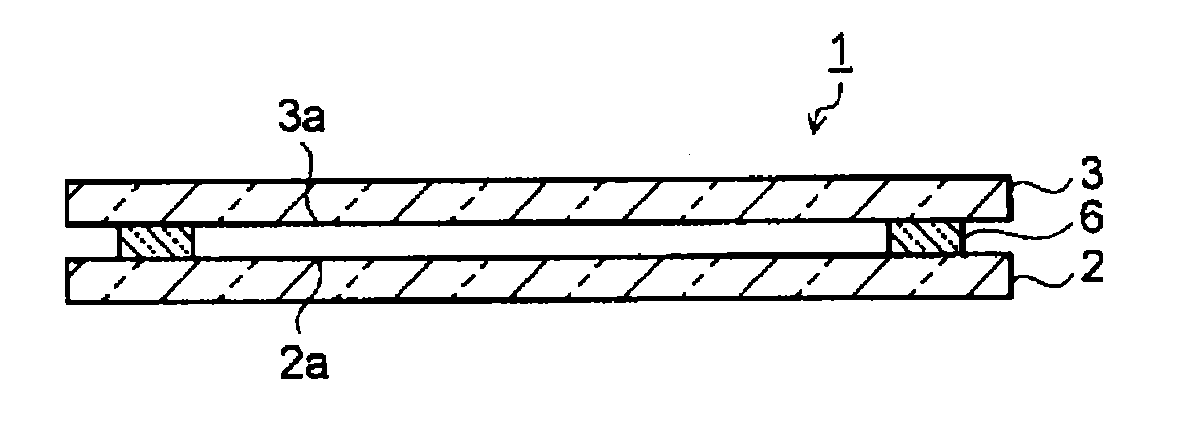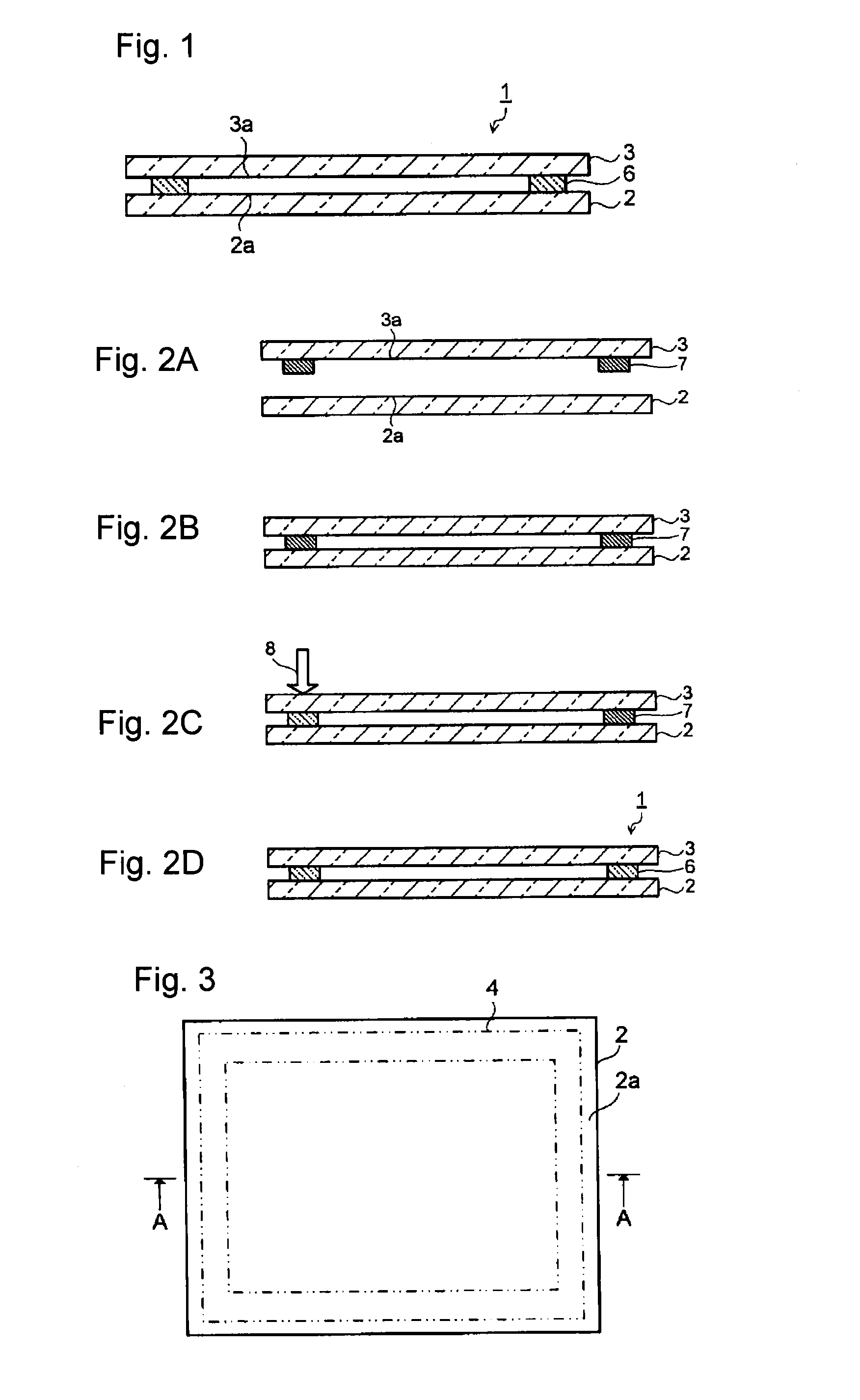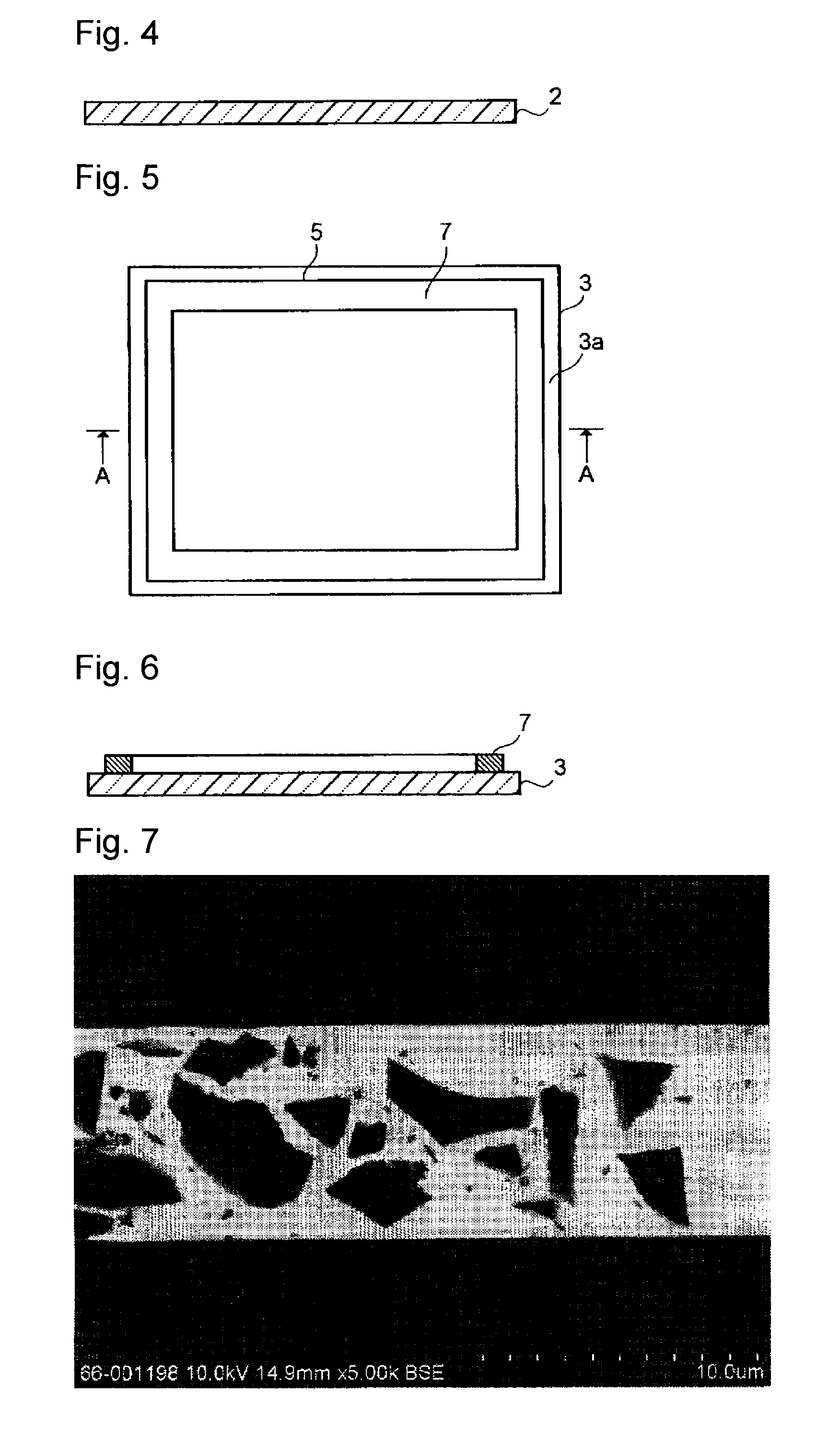Electronic device
- Summary
- Abstract
- Description
- Claims
- Application Information
AI Technical Summary
Benefits of technology
Problems solved by technology
Method used
Image
Examples
example 1
[0079]A bismuth glass frit (softening point: 410° C., thermal expansion coefficient: 106×10−7 / ° C.) having a composition of, as calculated as the mass percentage of the following oxides, 83% of Bi2O3, 5% of B2O3, 11% of ZnO and 1% of Al2O3; a cordierite powder as a low expansion filler having an average particle size (D50) of 4.3 μm and a specific surface area of 1.6 m2 / g; and a laser absorbent having an average particle size (D50) of 1.2 μm and a specific surface area of 6.1 m2 / g, that is a compound containing Fe, Mn and Cu (specifically, the compound has a composition of, as calculated as mass percentage of the oxides, 16.0% of Fe2O3, 43.0% of MnO, 27.3% of CuO, 8.5% of Al2O3 and 5.2% of SiO2); were prepared.
[0080]The particle size distribution of the cordierite powder was measured by employing a particle size analyzer (MICROTRAC HRA manufactured by Nikkiso Co., Ltd.). The measurement conditions were set as follows: measurement mode (HRA-FRA mode, particle transparency: yes, spher...
example 2
[0091]Formation of a sealing material layer and sealing of the first glass substrate and the second glass substrate together by a laser beam were carried out in the same manner as Example 1 except that a cordierite powder having an average particle size (D50) of 2.6 μm and a specific surface area of 4.5 m2 / g was employed as a low expansion filler. The temperature of the sealing material layer at the time of irradiation of laser beam, was 620° C. in the same manner as in Example 1. The state of an electronic device having a glass panel thus produced, was observed, and as a result, no generation of a crack or a breakage was observed in the glass substrates or the sealing layer, and it was confirmed that these components were satisfactorily sealed together. Further, observation and image analysis of the cross-section of the sealing layer were carried out in the same manner as Example 1, and as a result, the fluidity inhibition value was 1.26 μm−1 and the thermal expansion value was 74×...
example 3
[0092]Formation of the sealing material layer and the sealing of the first glass substrate and the second glass substrate together by a laser beam were carried out in the same manner as in Example 1 except that 74.5 volume % of the bismuth glass frit, 24.5 volume % of the cordierite powder and 1.0 volume % of the laser absorbent were mixed to produce a sealing material (thermal expansion coefficient (50 to 350° C.): 75×10−7 / ° C.). The temperature of the sealing material layer at the time of laser irradiation was 620° C. in the same manner as in Example 1. The state of an electronic device having a glass panel thus produced was observed, and as a result, no formation of a crack or a breakage was observed in the glass substrates or the sealing layer, and it was confirmed that these components were satisfactorily sealed together. Further, observation and image analysis of the cross-section of the sealing layer were carried out in the same manner as Example 1, and as a result, the fluid...
PUM
| Property | Measurement | Unit |
|---|---|---|
| Fraction | aaaaa | aaaaa |
| Fraction | aaaaa | aaaaa |
| Thickness | aaaaa | aaaaa |
Abstract
Description
Claims
Application Information
 Login to View More
Login to View More - R&D
- Intellectual Property
- Life Sciences
- Materials
- Tech Scout
- Unparalleled Data Quality
- Higher Quality Content
- 60% Fewer Hallucinations
Browse by: Latest US Patents, China's latest patents, Technical Efficacy Thesaurus, Application Domain, Technology Topic, Popular Technical Reports.
© 2025 PatSnap. All rights reserved.Legal|Privacy policy|Modern Slavery Act Transparency Statement|Sitemap|About US| Contact US: help@patsnap.com



